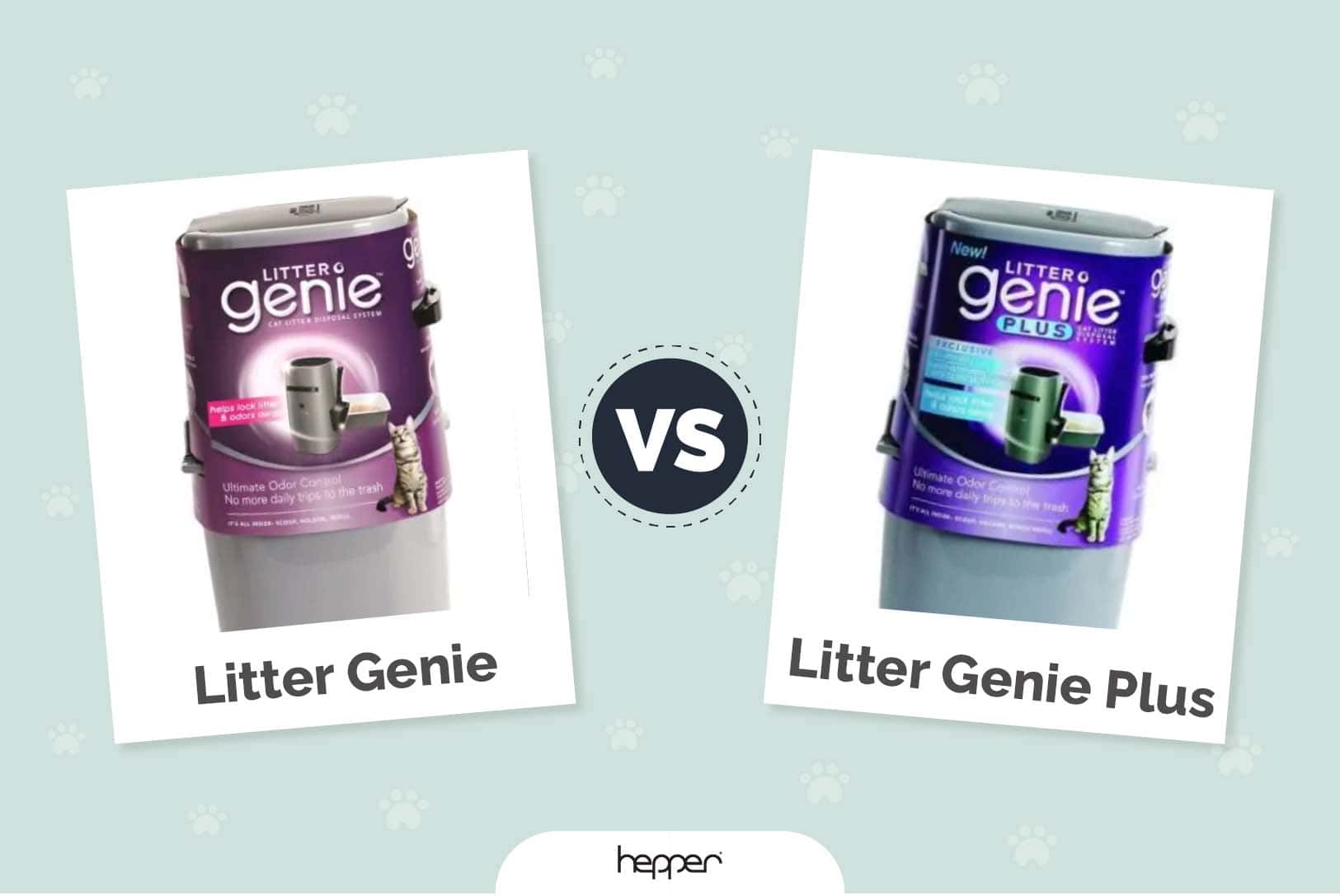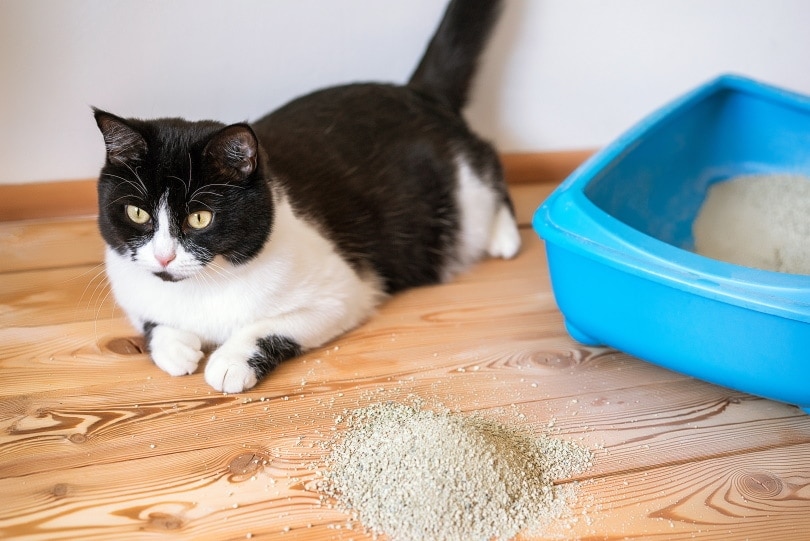How to Keep Litter from Sticking to a Litter Box: Vet Approved Tips
By Ashley Bates
Updated on
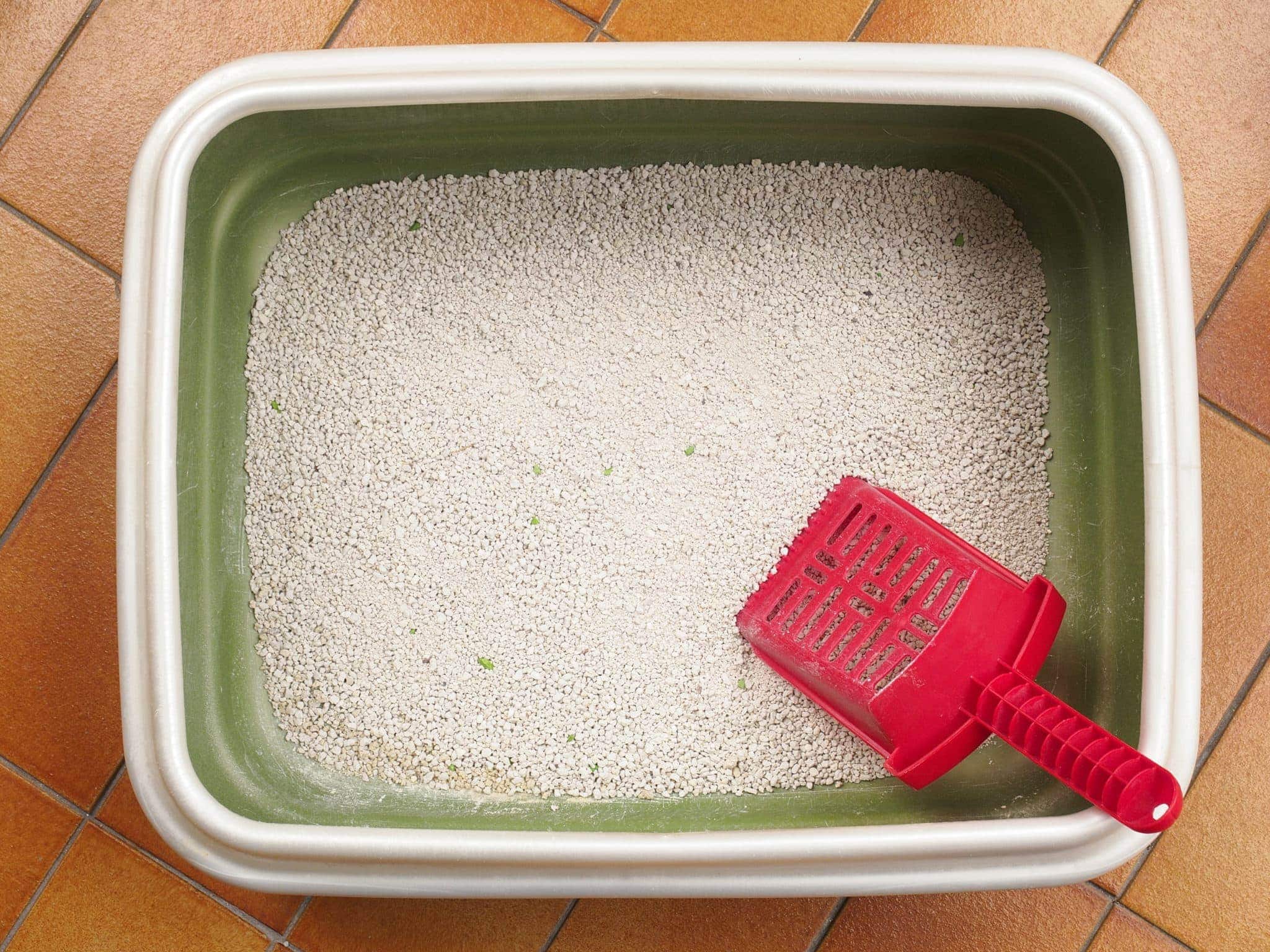
Cleaning a litter box has to be a cat owner’s least favorite part about having these fantastic felines in the home. But, it is definitely not a task you want to put off. Not only is that unfair to your kitty, it will not make the job any easier, or your home smell any nicer!
What’s more annoying is trying to clean a litter box with litter stuck to the sides of the container due to poop and urine. So, what is an easy way to keep the sticky stuff off the plastic so you don’t have to slave away longer than necessary?
In this article, we will give some suggestions on how you can manage sticky litter.
The 8 Ways to Keep Litter From Sticking to a Litter Box:
1. Use a Litter Liner

Companies are already way ahead of you. Litter box liners are designed to meet the size requirements of many commercial litter boxes. These liners protect the actual plastic, creating a barrier between the litter box itself and the waste.
It makes it really easy to sit, clean, and dispose of. You can buy litter box liners at pet shops or online, whatever you prefer. They are super affordable and convenient to have on hand. Just make sure you are purchasing the right size for your litter box. Sizing is important.
- Disposal is simple
- Bags are easy to change
- Made to fit
- Recurring expense
- Cats often pull the liners into the litter
- You often need to dispose of the litter and liner each time, rather than just removing soiled litter
2. Nonstick Cooking Spray
Nonstick cooking spray isn’t just good for the kitchen. You can also use it in your favor to prevent your cat’s waste from sticking to the box. You simply coat the entire interior of the box and use a non-sticking spray before you add the litter.
When you go to change it, you can easily scoop it off the sides without worrying about excessive sticking. During full litter box changes, you should completely clean the pan to remove old build-up and prevent scum from forming inside.
- Common household item
- Inexpensive purchase
- Can create film inside the box
- Frequent cleaning
- Not always effective
- Cats might be put off by the smell
3. Buy a Non-Stick Litter Box
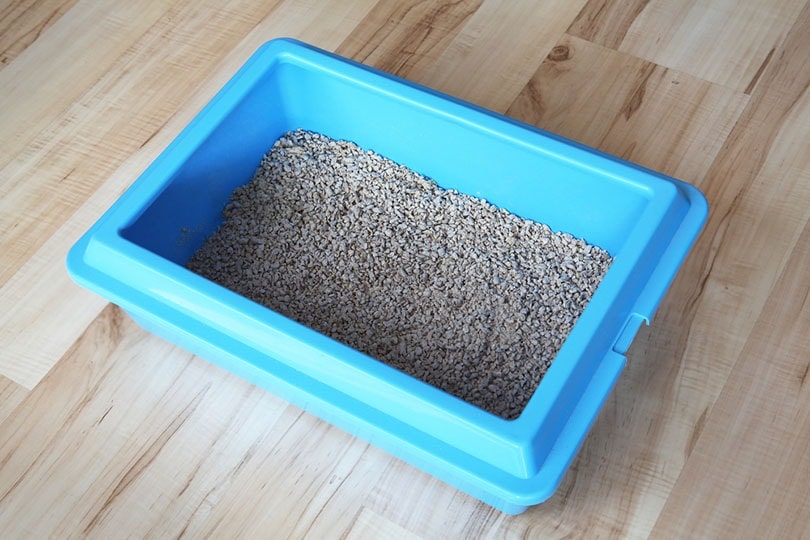
Believe it or not, there are non-stick litter boxes on the market. They are more expensive than others, and many are made of stainless steel. They are also typically antimicrobial and offer a long list of other benefits—like being non-porous and easy-to-clean.
You can sometimes find non-stick litter boxes in stores but there may be more options online. If you decide to buy one of these litter boxes, keep in mind it is a one-time purchase. So it might have a higher price tag out front, but it can save you money in the long run.
- Antimicrobial
- Non-porous
- Expensive
4. Choose an Automatic Litter Box
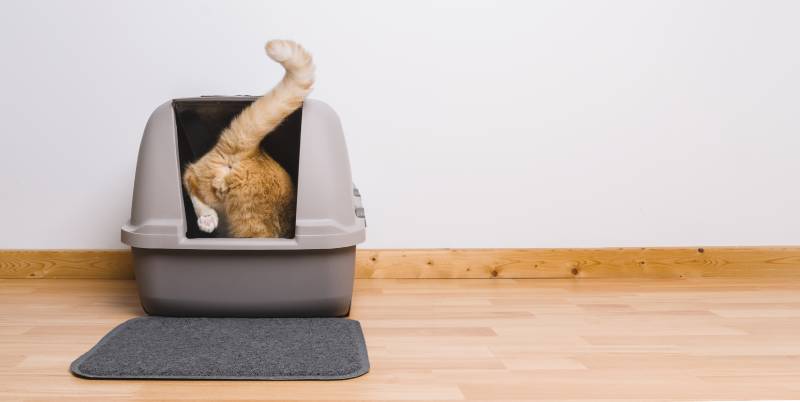
Sometimes, the answer is a new litter box. Automatic litter boxes are ever-growing in popularity these days. It makes cat parents’ lives a lot easier to have a system that cleans the litter box for you. Granted, there still is a little bit of labor involved as you have to empty the collected waste, but it certainly makes things less of a hassle.
If your cat’s litter box is being sifted automatically, it has less chance to settle and stick. Typically, these devices are designed to feel your cat’s weight inside the box, triggering the response to rake through it once your cat is finished.
You can find many automatic litter box choices on sites like Chewy and Amazon, though more and more pet shops are selling them in-store.
- Self-cleaning
- Programmable
- Time-saving
- Expensive
- Some require additional purchases
5. Follow the Litter Box Rules

The rule of having litter boxes with felines in the home is that you should have one litter box for every cat, plus an additional one. For example, if you have three cats, you need three litter boxes plus a fourth. Even with one cat, it is a good idea to have a second litter box.
Providing enough litter boxes ensures one litter box will not get clumped up with waste, leading to a much dirtier environment. The more your cats use the litter box during the day, the harder it will be for you to pry litter off the plastic sides.
- Evenly distributes waste
- Makes clean up easier
- More to clean (but necessary)
6. Add Baking Soda

Here’s an inexpensive idea. Try sprinkling a little baking soda on the pan before adding litter. Not only will baking soda keep down the odor, but it can prevent waste from sticking to the sides as well. Baking soda naturally adheres to the litter, creating a barrier between the surfaces.
Since baking soda absorbs moisture, it will soak up pee and moisture in feces, preventing less sticking to the sides of the litter box because it will stick to the baking soda instead. The harder clumps will then be easier to remove. You can buy baking soda in the baking section of nearly every grocery store in the world.
- Natural odor prevention
- Absorbs moisture
- Easily accessible
- Can be messy
7. Use High-Quality Clumping Litter
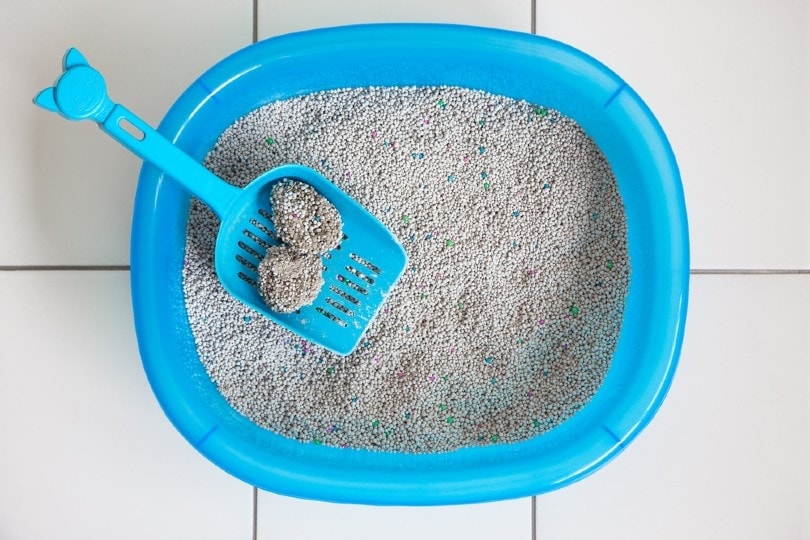
You might not think much about the quality of your cat litter much, but it really counts. Not only do you want a worthy product, but the clumping type really prevents waste sticking because it binds the moisture on contact.
Your cat can do their business and cover it up—and it shouldn’t stick to the side unless the litter box is very dirty. Many folks choose clumping clay litter, but other options are on the market, too. You can get it in both lightweight or standard.
- Readily available
- Traditional option
- Easy to clean
- Can still get litter sticking to box, especially with clay types
8. Use Silica Litter
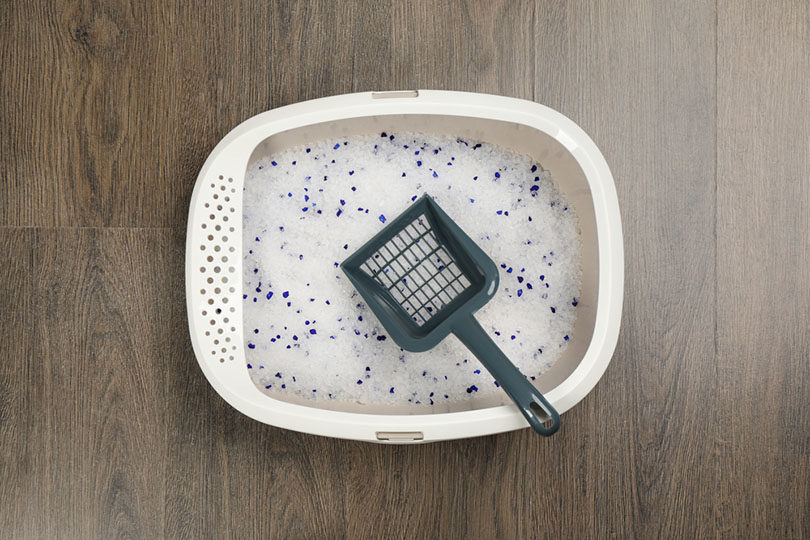
This more expensive type of litter works by absorbing all the urine, keeping the odor locked away, and gradually releasing the moisture by evaporation. These silica gel granules don’t get soggy like other litter materials, so don’t tend to stick to the litter box. Because of the way it binds the urine, all you need to do is scoop out any poops, and then do a full litter change every 3-4 weeks.
- Good odor control
- Non-soggy or sticky litter
- Lower maintenance
- Low dust
- Expensive
- Not environmentally friendly (mining)
- Some cats don’t like the texture
Conclusion
Now you can make sure you never have to pry a plastered piece of poop and litter from your cat’s box. Okay, maybe sometimes you still might have to—but implementing some of these ideas can significantly decrease your chances.
Some of these suggestions can help you in other ways, too. Think about which ones will make your life easier—because that’s the most important part.
Featured Image Credit: Enki Photo, Shutterstock



